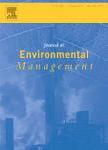版权所有:内蒙古大学图书馆 技术提供:维普资讯• 智图
内蒙古自治区呼和浩特市赛罕区大学西街235号 邮编: 010021

作者机构:Tianjin Univ Coll Management & Econ Tianjin 300072 Peoples R China
出 版 物:《JOURNAL OF ENVIRONMENTAL MANAGEMENT》 (J. Environ. Manage.)
年 卷 期:2024年第354卷
页 面:120417页
核心收录:
学科分类:0830[工学-环境科学与工程(可授工学、理学、农学学位)] 08[工学]
基 金:National Natural Science Foundation of China Major Program of National Fund of Philosophy and Social Science of China [2014B1-0130] Tianjin Research Innovation Project for Postgraduate Students [2022SKYZ238]
主 题:Reverse logistics network Sustainability Circular economy Electronic waste Multi-objective mixed-integer nonlinear programming
摘 要:Unsustainable production and consumption are driving a significant increase in global electronic waste, posing substantial environmental and human health risks. Even in more developed nations, there is the challenge of low collection rates. In response, we integrate offline and online trading systems and design a material efficiency strategy for used cell phones. We propose a new multi -objective optimization framework to maximize profit, carbon emissions reduction, and circularity in the process of recycling and treatment. Considering multiperiod, multi -product, multi -echelon features, as well as price sensitive demand, incentives, and qualities, we established a new multi -objective mixed -integer nonlinear programming optimization model. An enhanced, Fast, Non -Dominated Solution Sorting Genetic Algorithm (ASDNSGA-II) is developed for the solution. We used operational data from a leading Chinese Internet platform to validate the proposed optimization framework. The results demonstrate that the reverse logistics network designed achieves a win-win situation regarding profit and carbon emission reduction. This significantly boosts confidence and motivation for engaging in recycling efforts. Online recycling shows robust profitability and carbon reduction capabilities. An effective coordination mechanism for pricing in both online and offline channels should be established, retaining offline methods while gradually transitioning towards online methods. To increase the collection rate, it is essential to jointly implement a transitional strategy, including recycling incentives and subsidy policies. Additionally, elevating customer environmental awareness should be viewed as a long-term strategy, mitigating the cost of increasing collection rates during the market maturity stage (high collection rates).